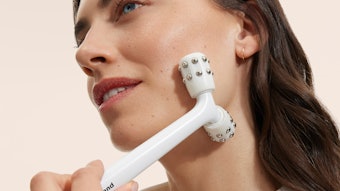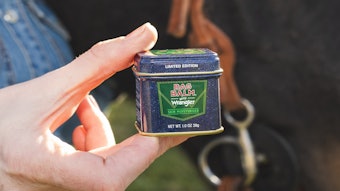The recent surge of growth within men’s grooming and personal care is a global phenomenon, extending across markets from Indonesia and South Korea to the U.S. and Western Europe. With the category growing exponentially in the past two years, both large-scale and niche brand owners that understand the potential of products catering to a well-groomed male identity are standing at attention. According to Euromonitor International, the global men’s grooming segment grew 7.4% between 2009 and 2010, and is forecast to reach $31 billion by the end of 2011 [read “A New Pampering Culture Fuels Opportunity in Men’s Grooming” on www.GCImagazine.com]. Rather than being indicative of a global “metrosexual 2.0” trend, this rise of the male personal care market can be attributed to factors such as increased competition in the workforce during the global recession, with physical attractiveness continuing to play a role in an individual’s success, as well as men taking a more active role in household shopping.
Around the World
There are regional differences, of course. Men’s grooming in Western Europe and North America is growing, but that growth is not significant and remains largely restricted to grooming, particularly within the U.S. With skin moisturizers accounting for most of the new growth in the category, males in these more mature markets often remain focused on the essentials, such as deodorants, shaving products and shampoos.
Meanwhile, in Asian markets, the male personal care industry is booming, largely driven by sales in skin care—in particular, the categories of anti-aging, skin whitening and cosmetics, as well as cosmetic surgery. In China alone, the men’s personal care market overtook the North American market by more than $42 million in 2010, growing to more than $269 million, compared to $227 million for all of North America. This growth is expected to continue, with projected annual growth of more than 29% from 2009 to 2014, compared to 5.7% for the U.S. and 7.9% in Europe. Sales of men’s skin care products within China are even expected to double the pace of growth of the women’s market.
Asia Specific
As increased standards of living drive spending toward beauty products, markets such as China, Indonesia, Thailand and South Korea are emerging as powerful players in the global beauty scene. Across Asia, men are increasingly image-conscious and concerned with attractiveness. Particularly as white-collar, service-oriented jobs increase in prevalence, an attractive, well-groomed appearance can serve as a key differentiator and indicator of social class, even professional experience. In addition, in countries such as China and South Korea, there is less of a cultural resistance to men’s grooming and use of cosmetics. Attitudes regarding masculinity vary depending on factors such as age and location. Commonly referred to as du shi yu nan, or “City Jade Men,” this emerging Asian male began spending his disposable income on smaller luxury items such as accessories and apparel before venturing into cosmetics. It is largely the association of cosmetics as a status symbol that has helped to transform the category overall, helping to make spending on skin care products more than 30% higher than products related to shaving.
Asian beauty ideals often have less to do with vanity and more to do with success and personal perfection. Similar to Asian women, Asian men strive for fair, flawless skin and will often go to extreme measures to attain it. Cosmetic surgery, recognized as an affordable investment for an individual’s success among younger consumers, has skyrocketed in popularity, particularly for males between the ages of 35 and 55. These younger consumers and their parents regard cosmetic surgery as a viable method to achieve success. While South Korea remains the most popular cosmetic surgery market for Asian consumers, cosmetic surgery in China is expected to grow in sophistication in the coming decade.
Skin-whitening products are a common aspect of a male’s daily skin care routine too, often included within multifunctional formulations that also offer sun protection or anti-aging benefits. For Asian men, particularly in countries such as Indonesia, fragrance is also driving category growth as more men seek to prevent body odor and smell attractive as a key aspect of grooming. Associated with personal hygiene and health, scent is becoming an important driver at shelf to reaffirm the efficacy of a product, from deodorants to shampoos to skin creams.
Formulations that elevate the sensory experience of the beauty routine, such as menthol within shampoos, are becoming increasingly widespread, moving from prestige to more brands at mass.
Asian men are also more likely to experiment with new products and enjoy participating in the beauty experience, seeking professional help from spas and salons. Men and women will often share in the beauty experience together, frequenting beauty counters and enjoying beauty treatments. Products such as Olay Professional, which has a counter presence in department stores, appeal to both men and women and offer both sexes consultations regarding regimens and product selection. This is a marked difference from shopping patterns exhibited by men in Western Europe and the U.S., who tend to frequent convenience stores and seek efficiency within the shopping experience.
In Asia as well, spouses, girlfriends and mothers take an active role in the beauty routine of their male counterparts, with women still accounting for half of all male beauty purchases. Some of this behavior can be attributed to China’s one-child policy, which has numerous sociocultural implications in which the Chinese male is often placed on a pedestal within the household, entitled to luxuries and access to more of the disposable income.
These so-called “Flower Boys” are an important segment for the future of the beauty industry in Asia. Young, 20-something males embrace fashion and cosmetics with smooth skin and expressive hairstyles. They crave individuality and shun conformity, a quality prized in their parents’ generation. The staid appearance of their fathers, guided by Western culture’s values and preferences, is increasingly irrelevant to Flower Boys, who tend to display themselves as more distinctly and proudly Asian. Additionally, as men continue to outpace women in the overall population, particularly in younger generations, there is more pressure for these Flower Boys to distinguish themselves from the competition for potential partners and professional opportunities.
International Implications
International brands are often the preferred choice for Asian men, commonly believed to be of a higher quality and status than domestic brands. Procter & Gamble’s Olay for Men exclusively launched in China, and has experienced remarkable success among urban consumers, helping Olay to achieve resonance with male consumers across Asia in other beauty categories as well. Olay Men Solutions launched in 2011, offering a Multi Solution Eye Gel designed as a one-step solution to reduce dark circles and signs of aging. A Multi-Solution Revitalizing Cream also launched under the Olay brand this year in Thailand and Singapore, to address signs of skin fatigue with vitamins and ginseng extract.
Western-style marketing techniques accompany these Western brands in Asia, including outdoor billboards, television ads and print ads in men’s fashion magazines, which are an increasingly pervasive presence, particularly in urban centers. High fashion labels and Chinese editions of Esquire and GQ are important signifiers of wealth and social status. Included in these pages are cosmetic advice from experts and references to other male celebrities embracing male beauty, such as Huang Xiaoming, an Olay for Men’s brand ambassador in China.
Interestingly, the engagement level for male grooming products for consumers in lower socioeconomic classes living in rural communities is not as pervasive but is becoming more acceptable among younger generations. Many of these consumers show preferences toward domestic brands, particularly those brands that employ strategies that recognize regional differences in language and religion.
Even with these advances, the Asian male still remains largely underserved, accounting for less than 1% of the total beauty market. With sales figures continuing to climb, beauty brand owners and industry professionals can expect to see significant investment in innovation and new product launches in the next five years, particularly from international or foreign manufacturers. As spending for personal care products continues to penetrate the rising middle class, this dynamic category will see more introductions at mass, and innovation will likely focus on the specific needs and evolving preferences of the Asian male consumer.
Liz Grubow is vice president and group creative director of LPK Beauty. In her 20-plus-year career, Grubow has helped develop and manage brand identity programs for some of the world’s most successful beauty brands—including Pantene, Olay, MAX Factor International and Cover Girl.
Alan Kastner is creative director of LPK Beauty. His work focuses on how consumers in emerging markets are changing the business of global brand design. While managing LPK’s office in Singapore, Kastner traveled throughout Southeast Asia, working with brands including Herbal Essences, Gilette and Olay. He’s also worked managing design strategy for brands such as PUR and Pampers.










